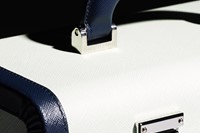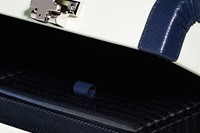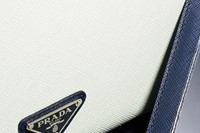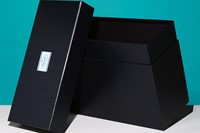AnOther examines the storied codes of Prada, via a visual exploration of this highly covetable box
There are few items as desirable as a large, lacquered Prada box – and our newest Object of Desire is exactly that. However, Baker & Evans's index of the assortment of wonders housed within the navy trunk is not only a thorough documentation of the sort of item that one would dream to find under a Christmas tree, but equally a study into the facets that define the storied brand.
Originally established in 1913 by Mario Prada, a man who pioneered innovation within the domain of travel goods, Miuccia Prada's subsequent evolution of the house (which she inherited in 1979) has maintained the codes that were key to her predecessors – here, we explore how.
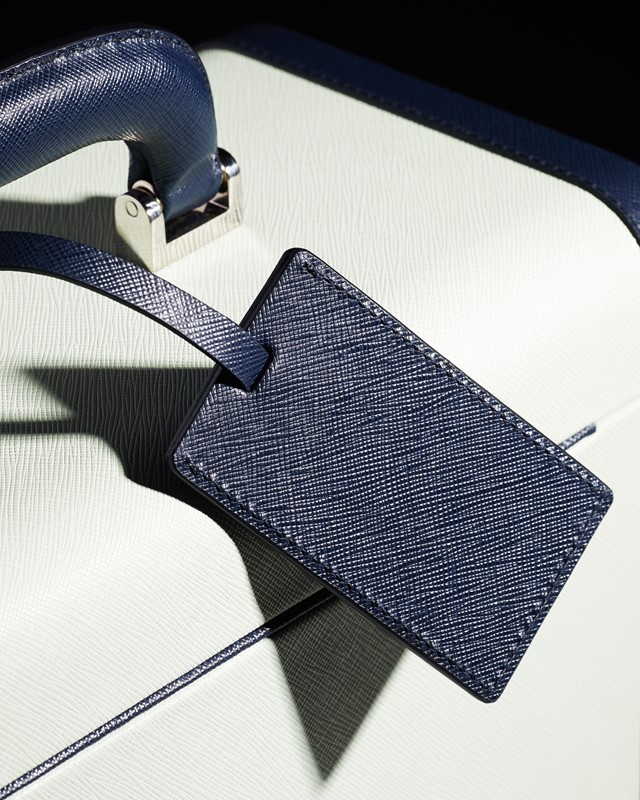
Invention is rough
It was Mario Prada who first introduced the saffiano leather that has since become an iconic staple of the brand, its grainy texture (replicated on the navy box) first applied to steamer trunks, and now synonomous with luxurious durability. It is this saffiano leather from which the beauty case concealed within the box is constructed, its minty-green hue dulled by tactile indentations. As the house explained in their 2009 encyclopeadia Prada, "if everywhere is smooth, art becomes that which maintains a quality of roughness. Common is smooth; unique is rough... Typical is smooth; invention is rough. In this future, luxury must be rough".
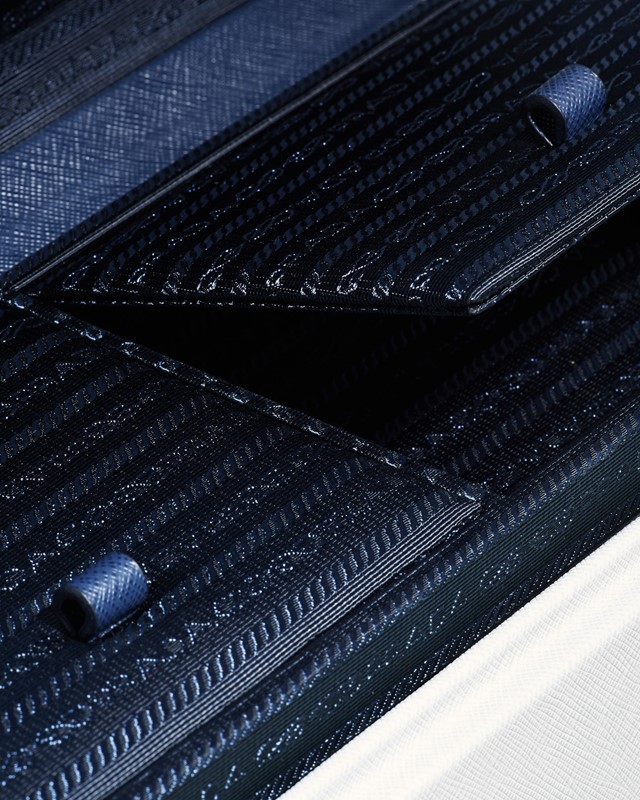
Refinement is industrial
What is remarkable about the beauty case is the careful consideration of every detail of its production; elements like it's perfectly finished nylon lining. Nylon is the house's contemporary manifestation of saffiano leather – Miuccia Prada's version of modern luxury that somehow transforms the commonplace synthetic into something eminently exclusive. "I wanted to do something that was nearly impossible," she once said, "Make nylon luxurious." As her partner, Chief Executive of Prada Patrizio Bertelli explained, "Our way doesn't reply on craftsmanship but on the ability to translate that exquisite craft to an industrial level." And it is the marriage of industrialism with refinement, exemplified through the desirability of Prada's use of nylon, that has resulted in the brand becoming a powerhouse of innovation both in design and commercial production of luxury.
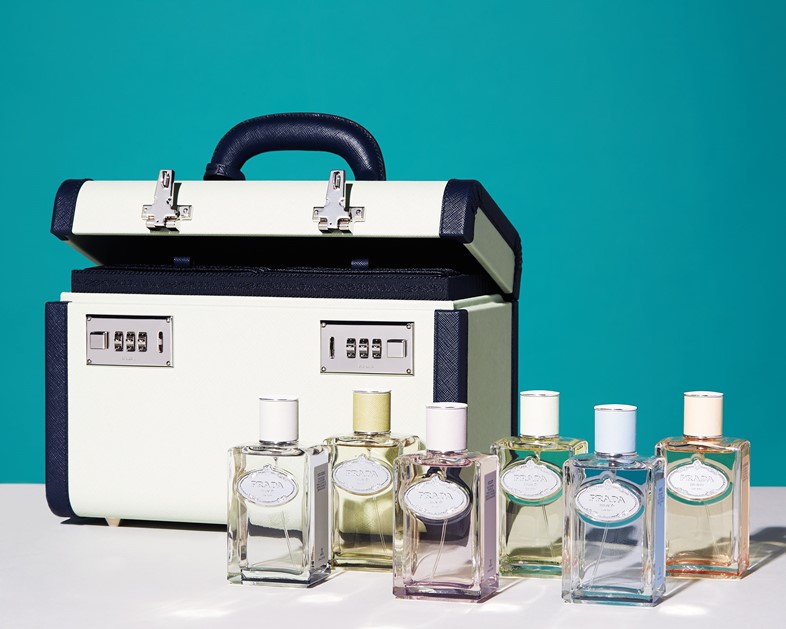
Contradiction is key
Nested neatly within the beauty case are six L'Infusion Prada fragrances, a series that they describe as "the culmination of a reverence for the past, an understanding of our place in the present, and the forwardlooking point of view of Prada...the graceful weave of apparent contradictions at the heart of Prada." With the saccharine rainbow of glass bottles embossed with the heritage crest, they embody not only the unison of past and present, but equally the cohesive conflicts that mark the brand: sweetness matched with subversion, subtlty alongside power. The Amande is bitter almond set against sugary tonkabean, the Oiellet a delicate carnation paired with spicy musk: they are the fragrant incarnation of Mrs Prada's collection for S/S16 – sinister in its pristine femininity, unnerving in its painstaking perfection.
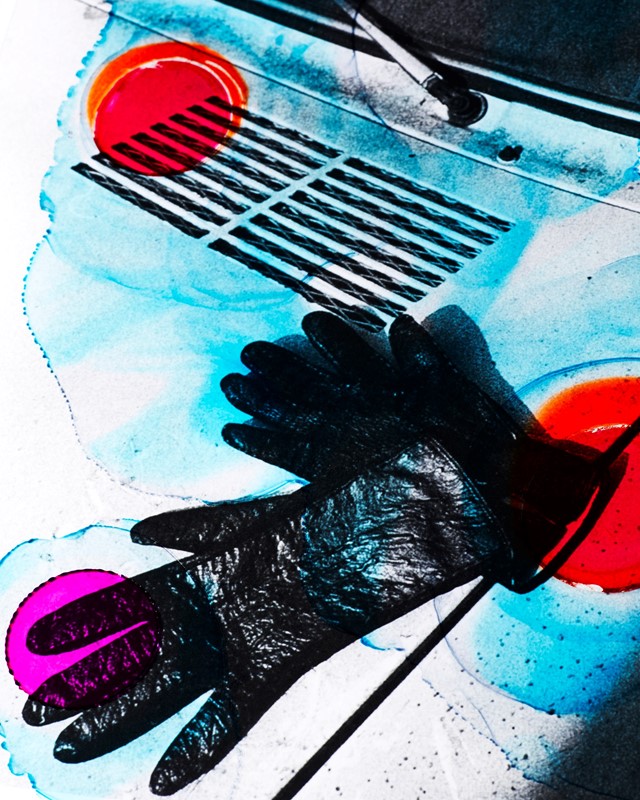
Art is paramount
Perhaps the most important element of the Prada brand is its nuanced understanding of and devotion to the arts; their Fondazione Prada a must-see within the art community, their collaborations with illustrators from Mats Gustafson to Richard Haines some of the greatest around. Housed within the Prada box is a large, limited-edition presentation case containing sheets of hand-painted acetate, or 'interventions', created by Lok Jansen. These transparencies overlay archive images and previous brand collaborations (like Albert Watson's 1988 series on Milan), transforming them into something new: a monochrome photography of a crocodile skin Prada glove becomes thoroughly modern through an orange transparency, a grooming case from Mario Prada's time is refreshed anew.


